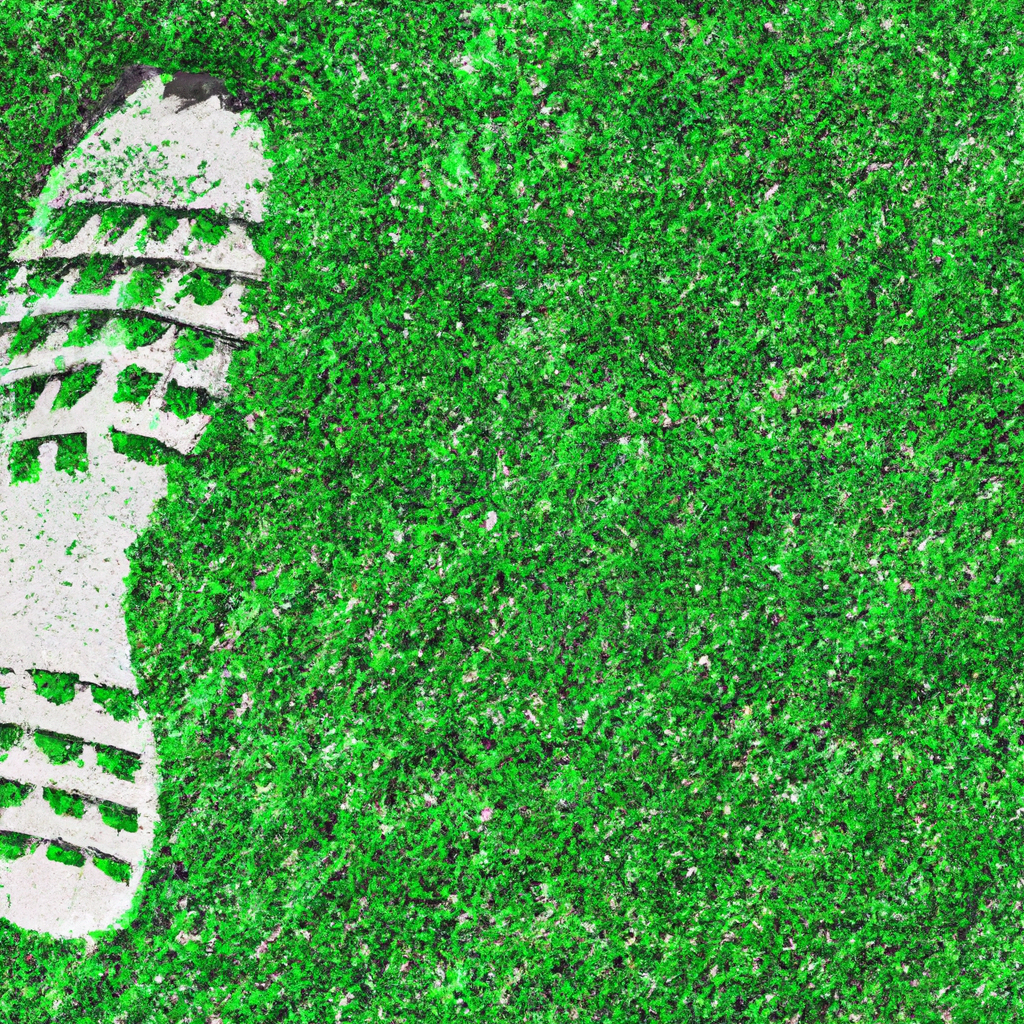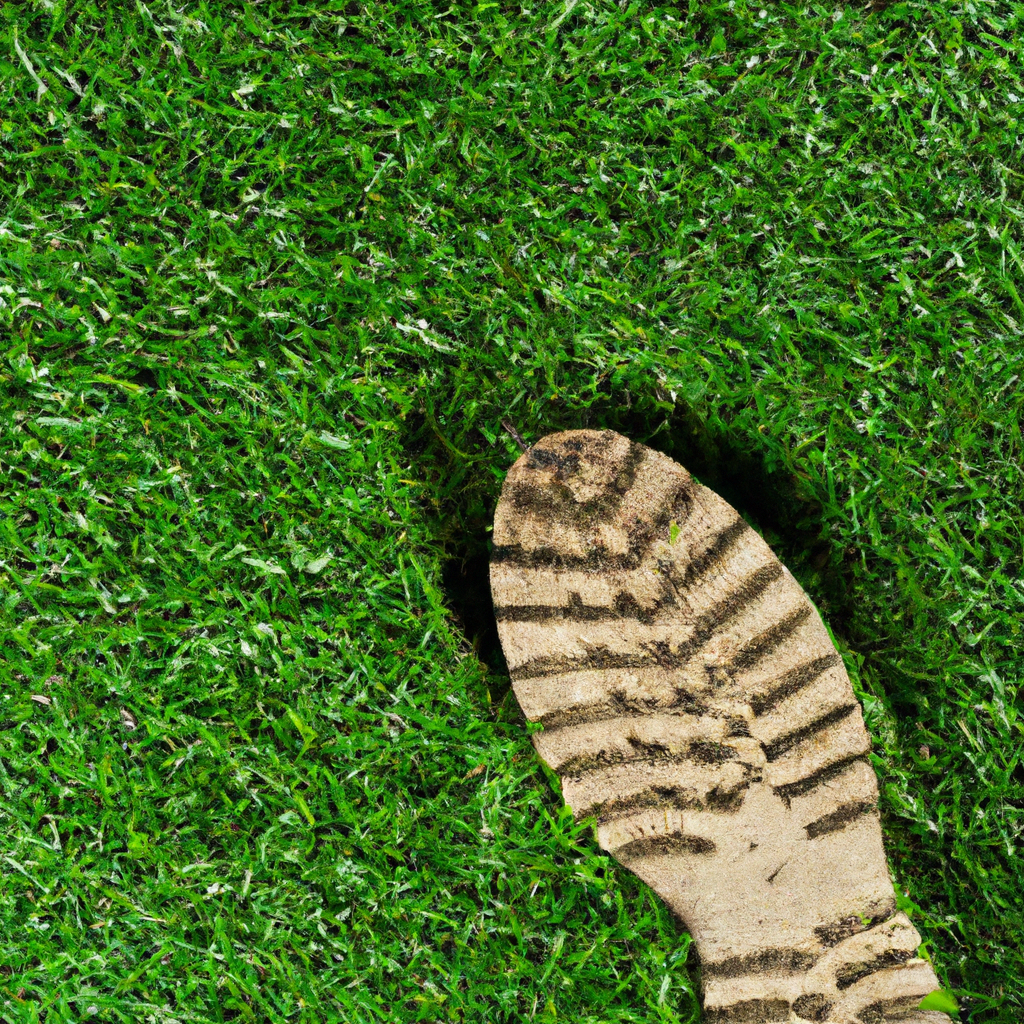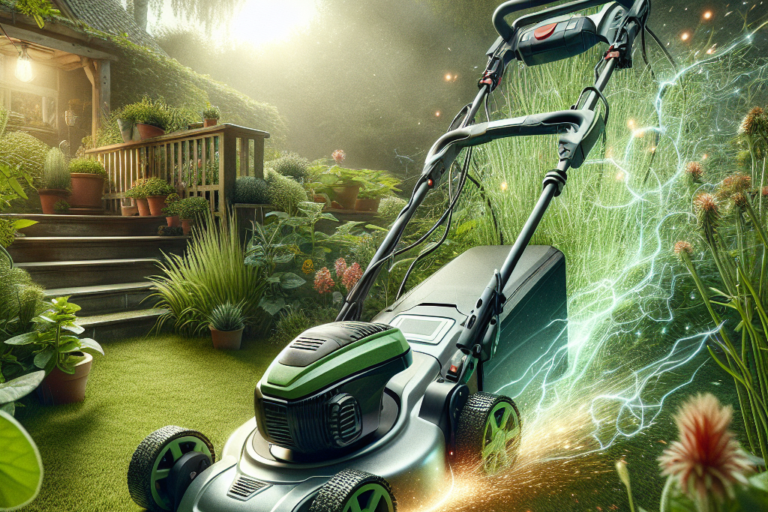Picture this: a beautiful, lush green lawn, perfectly manicured and inviting. But what if every step you take on that lawn leaves behind a visible, compacted footprint? Lawn compaction from foot traffic can be a frustrating problem to tackle, but fear not! In this article, we’ll explore some simple yet effective precautions you can take to prevent this common issue and keep your lawn looking pristine all year round. So, put on your gardening gloves and let’s get started!
Choose the right grass type
Consider your climate
When choosing the right grass type for your lawn, it is important to consider the climate in your area. Different grass species have different tolerances to heat, cold, and drought. In warmer climates, grass types like Bermuda grass and Zoysia grass thrive, while in cooler climates, Kentucky Bluegrass and Fescue are more suitable. By selecting a grass that is well-adapted to your climate, you can ensure that it will be more resistant to compaction.
Consider your soil type
The type of soil in your lawn also plays a significant role in how well the grass can resist compaction. Some types of soil, like clay soil, are more prone to compaction and require grass species that have deep root systems and good drainage capabilities. Sandy soil, on the other hand, may require grass varieties that can hold moisture more effectively. Understanding your soil type and selecting a grass that is compatible with it can help prevent compaction issues.
Choose a grass that is resistant to compaction
When selecting a grass type, look for varieties that are known for their resistance to compaction. Certain grass species, such as Tall Fescue and Buffalo grass, have natural attributes that make them more resilient when subjected to foot traffic. These grasses have the ability to bounce back and recover quickly, reducing the risk of soil compaction. By choosing a grass type that is resistant to compaction, you can ensure that your lawn remains healthy and vibrant even with regular foot traffic.
Establish clear pathways
Create designated walkways
One effective way to prevent lawn compaction is to create designated walkways in your yard. Designate specific areas where foot traffic is allowed and clearly define these pathways using materials like gravel, mulch, or stepping stones. By guiding people to walk on these designated paths, you can minimize the amount of traffic on the grass and reduce the potential for compaction.
Use stepping stones or pavers
Another option to establish clear pathways is to install stepping stones or pavers. These materials provide a solid walking surface and help distribute the weight of foot traffic more evenly. By strategically placing stepping stones or pavers, you can create a visually appealing path while protecting the grass from excess compaction.
Avoid walking on the same areas repeatedly
Encourage yourself and others to vary walking routes and avoid repeatedly walking on the same areas of the lawn. This will help distribute the foot traffic more evenly and prevent concentrated areas of compaction. By educating family members or visitors about the importance of avoiding repetitive walking patterns, you can minimize compaction and promote a healthier lawn.

Control the amount of foot traffic
Limit access to the lawn
One of the simplest ways to prevent lawn compaction is by limiting access to the lawn altogether. Depending on your specific needs and lifestyle, you can install physical barriers, such as fences or gates, to restrict access to certain areas of the yard. This can help protect the grass from excessive foot traffic and allow it to maintain its natural resilience.
Redirect foot traffic to designated areas
If limiting access is not feasible, consider redirecting foot traffic to designated areas. Clearly mark off areas of your lawn that are off-limits and provide visible signs or other guidance to direct people to designated paths. By channeling foot traffic to specific areas, you can reduce the overall impact on the grass and prevent compaction.
Encourage alternative routes
Promote alternative routes that will divert foot traffic away from vulnerable areas of your lawn. This could involve creating new pathways or suggesting different routes to family members or visitors. By offering alternative options, you can distribute foot traffic across a larger area, thereby minimizing the compaction on any single part of the lawn.
Provide signage or guidance
Place signs indicating restricted areas
Strategically place signs around your lawn to indicate restricted areas where foot traffic should be avoided. These signs can serve as a friendly reminder to visitors or family members to stay off certain sections of the lawn. By clearly communicating your intentions, you can effectively prevent compaction in these sensitive areas.
Install fences or barriers
For areas that require more protection, consider installing physical barriers like fences or gates. This can serve as a visual deterrent and prevent unintentional foot traffic from occurring. By implementing these protective measures, you can maintain a healthy, compact-free lawn.
Use clear markers to guide foot traffic
In addition to signs and barriers, use clear markers like flags or decorative stakes to guide foot traffic along designated paths. This will help visitors or family members easily identify the intended routes and minimize the chance of accidentally venturing into restricted areas. By providing visual guidance, you can effectively manage foot traffic and preserve the integrity of your lawn.

Manage lawn maintenance practices
Avoid mowing when the soil is wet
One important aspect of preventing lawn compaction is to avoid mowing when the soil is wet. Wet soil is more susceptible to compaction under the weight of mowers and causes damage to the turf’s root system. It is best to wait until the soil has dried out before proceeding with mowing to minimize the risk of compaction.
Use appropriate mowing techniques
Using the right mowing techniques can also help prevent lawn compaction. Adjust your mower blades to the appropriate height for your grass type and avoid cutting more than one-third of the grass blade at any given time. Proper mowing practices promote healthy grass growth and root development, reducing the vulnerability to compaction.
Consider alternative mowing methods
Consider alternative mowing methods, such as using a reel mower or a robotic lawn mower, which are lighter and exert less pressure on the soil compared to traditional gas or electric mowers. These alternative methods can help minimize compaction and preserve the overall health of your lawn.
Implement regular aeration
Understand the importance of aeration
Regular aeration is a crucial step in preventing lawn compaction. Aeration involves creating small holes in the soil to allow air, water, and nutrients to penetrate deep into the root zone. This process helps alleviate compaction, improve drainage, and promote healthy grass growth. Understanding the importance of aeration and the impact it can have on your lawn’s health will motivate you to incorporate it into your lawn care routine.
Choose the right tools for aeration
To effectively aerate your lawn, it is important to choose the right tools for the job. Manual tools, such as a coring aerator or a garden fork, can be used for small areas, while larger lawns may benefit from mechanized aerators or spike aerators. Consider the size of your lawn and the level of compaction when selecting the appropriate tools for aeration.
Follow proper aeration techniques
When aerating your lawn, it is crucial to follow proper techniques to avoid causing additional damage. Ensure that the soil is moist but not overly wet before aerating, as this will allow the aerating tools to penetrate the soil more easily. Aerate in a grid pattern, covering the entire lawn area, and make multiple passes if necessary. By adhering to proper aeration techniques, you can effectively prevent compaction and promote a healthier lawn.
Provide adequate drainage
Assess the lawn’s drainage capabilities
Inadequate drainage can contribute to lawn compaction, as waterlogged soil becomes more susceptible to compression. Assess the drainage capabilities of your lawn by observing how water accumulates and lingers after rainfall. Identify areas where pooling occurs and address these drainage issues to prevent compaction.
Improve soil drainage
To improve soil drainage, consider incorporating organic matter or compost into the soil. Organic matter can help break up compacted soil, improve its structure, and enhance its ability to drain excess water. Additionally, adding drainage channels or ditches can redirect water away from the lawn, minimizing standing water and reducing the risk of compaction.
Install drainage systems if necessary
In severe cases of poor drainage, installing a drainage system may be necessary. This could involve the installation of drain tiles, French drains, or underground pipes to direct water away from the lawn. Consulting with a professional landscaper or drainage expert can help determine the most suitable drainage solution for your lawn.
Consider the use of protective measures
Use temporary protective covers
Temporary protective covers, such as mats or geotextiles, can be used in high-foot-traffic areas to prevent compaction. These covers distribute the weight of foot traffic more evenly and act as a barrier between the soil and the pressure exerted by footsteps. By utilizing temporary protective covers, you can effectively minimize compaction while still allowing access to specific areas of the lawn.
Utilize turf reinforcement products
Turf reinforcement products, such as grass pavers or grid systems, provide a stable surface that can withstand foot traffic without causing compaction. These products allow grass to grow through the openings, creating a natural-looking surface while maintaining the integrity and health of the grass. Consider using turf reinforcement products in heavily trafficked areas to prevent compaction and promote a lush, resilient lawn.
Apply mulch or organic matter
Applying a layer of mulch or organic matter in areas prone to foot traffic can help protect the soil from compaction. Mulch acts as a cushion, absorbing some of the pressure and reducing the impact on the grass and soil. By incorporating organic matter into the topsoil, you can improve the soil’s structure and resilience, preventing compaction and promoting healthier root growth.
Promote healthy soil
Test and amend the soil as needed
Regular soil testing allows you to identify any nutrient deficiencies or imbalances in your lawn. By knowing the specific needs of your soil, you can amend it with the appropriate fertilizers or soil amendments. Maintaining a healthy soil pH, nutrient levels, and organic matter content helps promote robust grass growth, making it more resistant to compaction.
Ensure proper fertilization
Proper fertilization is essential for maintaining a healthy, vibrant lawn. By providing your grass with the necessary nutrients, you can promote robust root growth and overall plant health. Choose a fertilizer that is specifically formulated for your grass type and follow the recommended application rates. Regular fertilization will help ensure that your lawn remains strong and resilient against compaction.
Encourage soil organisms
Encouraging a diverse population of soil organisms, such as earthworms and beneficial microorganisms, can greatly enhance soil health. These organisms help break down organic matter, improve soil structure, and increase nutrient availability to the grass. Avoid using excessive amounts of pesticides or harmful chemicals that can negatively impact soil organisms. By promoting a healthy soil ecosystem, you can create a naturally resilient lawn.
Educate and inform
Inform visitors and family members about lawn care
Take the opportunity to inform visitors and family members about the importance of lawn care and the potential consequences of compaction. Share tips and guidelines on how to walk on the lawn, avoid restricted areas, and minimize foot traffic. By educating others about proper lawn care, you can ensure that everyone contributes to maintaining a compact-free and healthy lawn.
Provide guidelines for proper foot traffic
Create a set of guidelines or rules for proper foot traffic in your yard. This can include suggestions on designated paths to follow, areas to avoid, and alternative routes to choose. Distribute these guidelines to family members, post them near entrances, or share them with visitors. By providing clear instructions, you can actively prevent lawn compaction and preserve the beauty of your lawn.
Raise awareness about the importance of lawn compaction prevention
Raise awareness about the importance of preventing lawn compaction not only within your immediate circle but also within your community. Share your knowledge and experiences with neighbors, friends, or local gardening groups. By spreading the message, you can inspire others to take precautions and contribute to the overall health and well-being of lawns in your area.
By following these precautions and taking steps to prevent lawn compaction from foot traffic, you can ensure that your lawn remains lush, healthy, and resistant to damage. Remember to choose the right grass type for your climate and soil, establish clear pathways, control foot traffic, provide signage or guidance, manage lawn maintenance practices, implement regular aeration, provide adequate drainage, consider the use of protective measures, promote healthy soil, and educate others about the importance of prevention. By incorporating these strategies into your lawn care routine, you can enjoy a beautiful, vibrant lawn for years to come.



